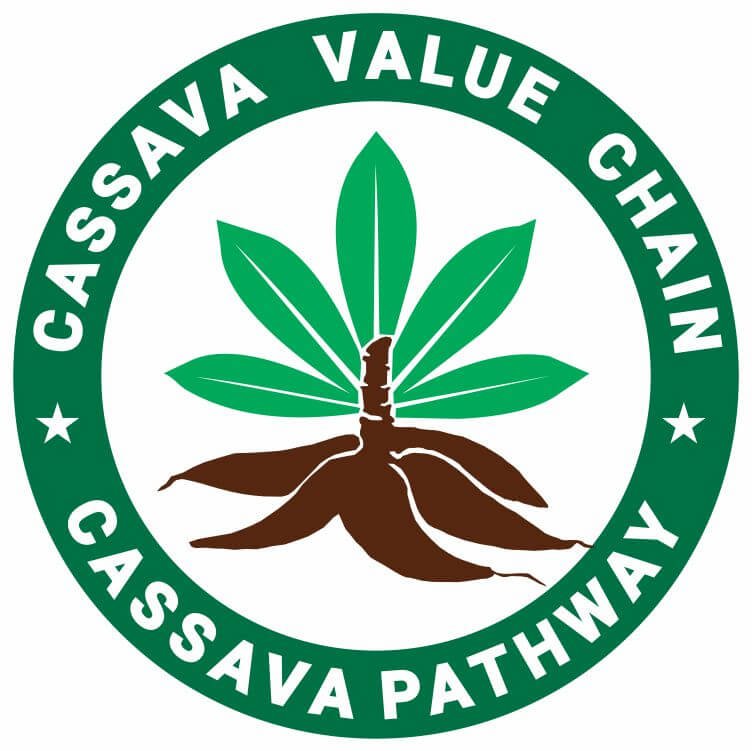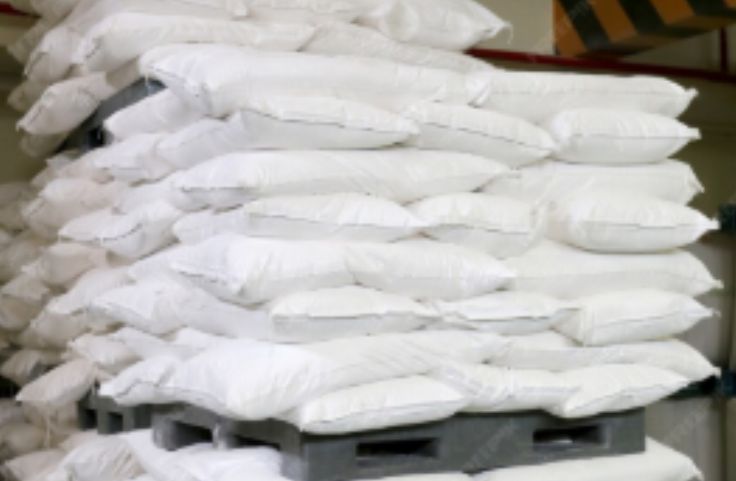Cassava flour production business offers high demand, low-cost entry, and profitable opportunities. This guide breaks down key steps, equipment, costs, and tips to help you succeed.
Cassava flour production business gives you a real chance to tap into a growing market.
If you’re looking to build something with lasting demand, cassava flour is a smart place to begin.
This guide will walk you through raw material sourcing, how to process cassava roots into flour, maintain food safety standards, and sell your product to the right buyers.
You don’t need to be a food expert to get started. With the right approach, you can grow a steady income stream and serve the needs of gluten-free and health-conscious markets.
For more details on what cassava flour is and how it fits into baking and food production, check our earlier post.
Keep reading to find out what it takes to turn cassava into profit and set up a business that can thrive in today’s food economy.
Recommended: Cassava Entrepreneurship: Everything to Know
Table of Contents
- Main Points
- Overview of Cassava Flour Business Opportunities
- Why Start a Cassava Flour Production Business
- Market Research and Feasibility Study
- Step-by-Step Guide to Starting the Business
- The Production Process: From Cassava Root to Flour
- Cost Breakdown and Profit Margins
- Marketing and Distribution Strategies
- Common Challenges and How to Overcome Them
- Frequently Asked Questions
- Conclusion
Main Points
- Cassava flour production fits rising gluten-free demand. Low startup costs, flexible models, and strong market growth make it attractive for new entrepreneurs.
- Strong supply chains begin with farmers. Build direct relationships or co-op partnerships to ensure quality cassava roots and avoid production delays.
- Each processing step matters. Clean, peel, press, dry, and mill carefully to avoid spoilage and deliver flour that meets food safety standards.
- Smart marketing builds loyal buyers. Clear packaging, a compelling story, and strong local and online outreach help grow your cassava flour brand.
Related: Packaging Guide for Cassava Entrepreneurs
Overview of Cassava Flour Business Opportunities
Cassava flour production offers real business potential. With rising demand for gluten-free food, you can choose a model that fits your goals, budget, and the market you want to serve.
Small-Scale Cassava Flour Production: Build a Local Brand with Low Startup Costs
If you’re just starting, small-scale cassava flour production can be your entry point. It works well in areas where cassava is widely grown.
You can keep costs low, work with local farmers, and sell to nearby shops, bakeries, or health-conscious buyers.
This setup gives you more control and flexibility while helping you understand your local market before scaling up.
Cottage Industry Model: Focus on Quality and Niche Markets
Running your cassava flour business as a cottage operation lets you focus on specialty products like organic, unbleached, or stone-milled flour.
If you enjoy hands-on work and want to target health stores or boutique food brands, this path offers room to grow.
You can use simple tools, keep operations home-based or community-driven, and build strong relationships with loyal customers.
Industrial Cassava Flour Production: Target Bigger Markets with Higher Output
If you have more capital and want to scale fast, industrial production could be your path.
It requires investment in machines and trained workers, but it also allows you to reach wholesale buyers, exporters, and food processors.
With better equipment, your production becomes more efficient and consistent, making it easier to meet high demand in larger markets.
Related Posts
How to Export Cassava from Africa
How to Profit from the Cassava Value Chain
How to Start Commercial Cassava Farming
Top 5 Cassava Processing Machines for Small Businesses
Multi-Function Cassava Processing Units
Cassava Ethanol: A Complete Guide
Why Start a Cassava Flour Production Business
Cassava flour production gives you real room to grow in a market that values clean ingredients.
More people are choosing gluten-free foods, and cassava flour fits that demand well.
Steady Supply of Raw Materials: Cassava Grows Where You Live
If you’re in a tropical or subtropical region, cassava is likely close by.
That gives you easy access to raw materials without paying high transport costs.
You can build strong ties with farmers and even grow your supply.
This keeps your production steady and supports your local economy at the same time.
With the right planning, your supply chain stays strong year-round.
Low to Medium Capital: Start Small and Grow with Demand
You don’t need a huge investment to begin. Many people start cassava flour production with basic tools and a small team.
As demand grows, you can upgrade your setup gradually.
This way, you avoid heavy debt and adjust your business size to meet the market.
Starting lean also helps you focus on quality and keep overhead low.
Flexible Business Models: Choose the Path That Fits You
You’re not locked into one way of doing business. You can serve local buyers with fresh, small-batch cassava flour or scale up to meet export needs.
It depends on your goals, budget, and access to resources.
Some people begin at home or in community spaces and later move to larger facilities.
The business grows with you, not the other way around.
Recommended: Top Cassava Processing Machine Producers
Market Research and Feasibility Study
Before you dive into cassava flour production, take time to understand the market.
A solid plan backed by real data helps you avoid costly mistakes and find the right direction.
Know the Demand: Understand Who Needs Cassava Flour and Why
Start by looking at who buys cassava flour in your area and beyond.
Are they health-focused shoppers, bakeries, or food manufacturers?
Study trends in gluten-free and grain-free diets. Use surveys, online data, and local feedback to learn what buyers expect.
The more you know about what drives demand, the easier it becomes to shape your product, pricing, and marketing.
Check the Competition: Know Who You’re Up Against
Study other cassava flour producers around you. What do they sell, how do they price their flour, and what makes their products stand out?
This helps you find gaps in the market and gives you ideas to do things better.
Use this knowledge to create a strong brand that gives customers a reason to choose you over others.
Secure Your Supply: Build Reliable Farmer Partnerships
Cassava flour starts with cassava roots. Build steady relationships with farmers or cooperatives near you.
When you work closely with trusted suppliers, you reduce risks tied to poor harvests or price spikes.
A steady source of quality cassava means fewer production delays and better control of your costs.
Your supply chain becomes a strength, not a stress.
Understand Food Regulations: Keep Your Product Market Ready
You can’t sell food without meeting health and safety rules.
Get to know the requirements from bodies like NAFDAC, FDA, or ISO.
Clean processing spaces, safe packaging, and accurate labels are a must.
Staying compliant protects your buyers and opens doors to bigger markets. It’s one of the best ways to build trust from day one.
Related: The Position of Cassava in the US Market
Step-by-Step Guide to Starting the Business
To launch a cassava flour production business, you need a clear process.
From setting up your location to sourcing tubers and marketing your product, each step builds the foundation for long-term growth.
Conduct Market Research: Know Who Will Buy from You
Start by finding out who needs cassava flour in your area.
Local bakeries, food processors, grocery stores, and health-conscious shoppers are good targets.
Ask questions, run surveys, and study trends.
The goal is to understand demand, pricing, and what buyers are looking for.
With this knowledge, you can shape your product and strategy to match what the market wants.
Choose a Good Location: Stay Close to Farms and Buyers
Your business site should be easy to access, spacious enough for processing and storage, and close to cassava farms or suppliers.
Being near your raw materials saves money and time.
It also helps when you’re ready to deliver flour to local shops or customers.
A smart location supports both your supply chain and your sales flow.
Register the Business: Meet Legal and Safety Requirements
Before you begin production, handle your paperwork. Register your business name and get the right permits.
This might include food handling licenses, health clearances, and environmental checks.
Each area has its own rules, so ask your local authorities what’s needed.
Being compliant from day one protects your business and builds trust with customers.
Source Fresh Cassava: Build Strong Farmer Partnerships
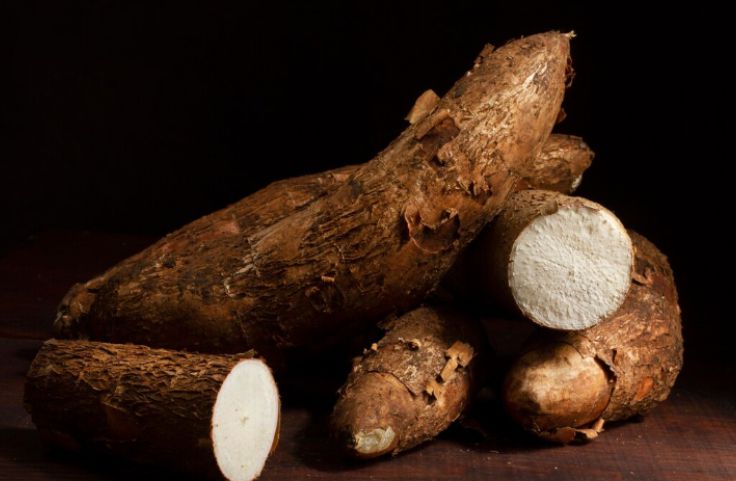
Cassava is the backbone of your business, so make sure your supply is steady.
Work directly with farmers or join agricultural cooperatives.
These relationships give you better pricing, consistent quality, and less chance of delays.
Secure your supply through written agreements when possible.
A reliable source keeps your production running smoothly.
Set Up the Right Equipment: Match Tools to Your Production Size
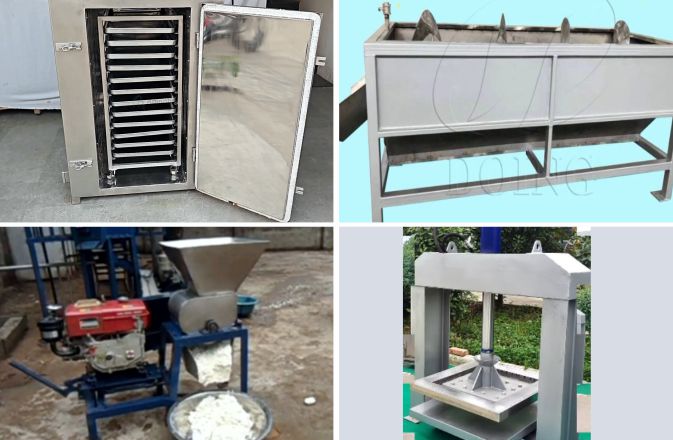
Invest in machines that clean, peel, grate, press, dry, and mill cassava roots into flour.
Start small if your budget is tight, then scale up as demand grows.
Make sure your equipment meets food safety standards and fits your available space.
Efficient tools help you save time, reduce waste, and improve the final product.
Build Your Brand: Let People Know You’re in Business
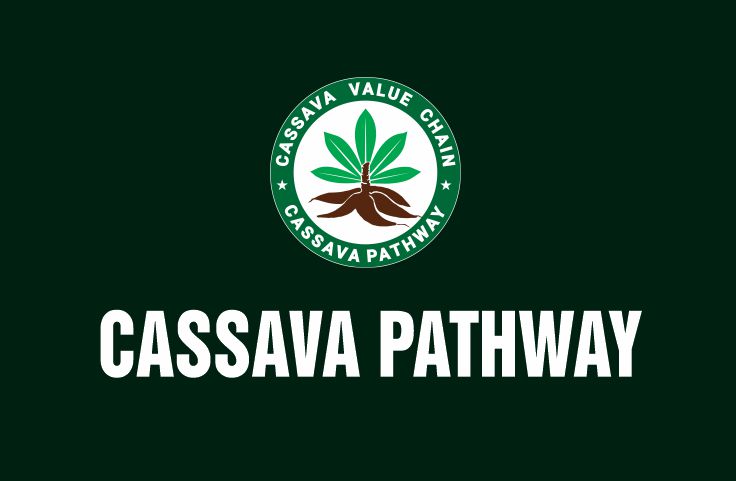
Now it’s time to reach your buyers. Use packaging that looks clean and professional.
Share your story on social media. Visit local stores and offer samples. Highlight what makes your flour stand out.
If your product is organic, unbleached, or processed in small batches, let that lead your message.
Consistent marketing helps people remember your name.
Related: How to Market Cassava Products and Make Profit
The Production Process: From Cassava Root to Flour
Turning cassava roots into flour takes more than just grinding.
If you want to make high-quality cassava flour that’s safe and ready for market, every step must be done with care and precision.
Sort and Peel the Roots: Remove Spoiled Tubers and Outer Skin
Start by sorting your fresh cassava roots as soon as they arrive. Remove any moldy roots, bruised, too small, or showing signs of decay.
These can ruin the quality of your flour and cause waste during processing.
Once sorted, peel the good roots using a sharp knife or a mechanical peeler.
The outer brown skin and inner pink layer must be removed completely.
This layer contains cyanogenic compounds that can be harmful if not removed.
Peeling also helps achieve a smooth flour texture and improves shelf life.
If you’re working with large volumes, mechanical peelers save time and reduce labor.
Don’t skip this step or rush it, what you leave on the root goes into your flour.
Wash the Roots: Clean Thoroughly Before Grating
After peeling, rinse the cassava roots with plenty of clean water to remove all dirt, sand, and unwanted particles.
Proper washing helps you avoid contamination, which can affect both the flavor and safety of your final product.
You can do this manually in large water basins or use industrial washing machines if you’re processing in bulk.
Repeat rinsing if needed until the water runs clear.
In some cases, food-grade sanitizers or chlorine rinses are used to further clean the roots, especially in commercial settings.
Always use potable water that’s safe for food processing.
This step sets the foundation for hygiene throughout the production chain, so don’t take shortcuts.
Your final flour depends on how clean your cassava is before it’s grated.
Grate the Roots: Break Down the Cassava for Better Processing
Now that your cassava roots are clean, it’s time to grate them into pulp.
Grating breaks down the dense root into smaller particles, which makes dewatering and drying more efficient.
You can use hand graters for small batches or motorized mechanical graters for larger volumes.
A good grater should produce fine, even pulp without leaving chunks behind.
Uneven grating can slow down drying and leave behind moisture, which increases spoilage risks.
Also, make sure your grater blades are sharp and cleaned regularly to maintain hygiene and processing speed.
This step plays a big role in the smoothness of the flour.
The finer and more uniform your grated mash, the better your final texture and the less energy you’ll spend during milling.
Dewater the Mash: Press Out Moisture to Avoid Spoilage
Grated cassava mash holds a lot of moisture, which you must remove to prevent fermentation, spoilage, and mold during storage.
Dewatering involves pressing the mash to squeeze out the excess liquid.
For small batches, you can use muslin cloth bags and manual presses.
If you’re producing at scale, a screw or hydraulic press will save time and labor.
The goal is to get the mash as dry as possible without damaging it. In some cases, fermentation is allowed before pressing, depending on the type you want to make.
Fermentation can reduce cyanide content and slightly change the taste and color.
After pressing, your mash should feel crumbly, not soggy.
Proper dewatering prepares the cassava for fast, even drying and helps reduce post-processing losses.
Dry the Cassava: Choose a Method That Matches Your Setup
After dewatering, the next step is drying the cassava mash until it’s crisp and moisture-free.
You can use sun drying if the weather is predictable and your space is clean.
Spread the mash on raised mats or trays and cover with mesh to keep out insects.
For more reliable drying, use an electric or gas-powered dryer, such as a cabinet dryer or hot air dryer.
These options offer better control over temperature and speed.
Avoid drying cassava on bare concrete or in humid spaces, as this affects both hygiene and drying quality.
Drying should continue until the mash is brittle and breaks easily by hand.
If you stop too early, leftover moisture will cause mold or clumping when the flour is stored.
Mill the Dried Pieces: Turn Chips into Fine Flour
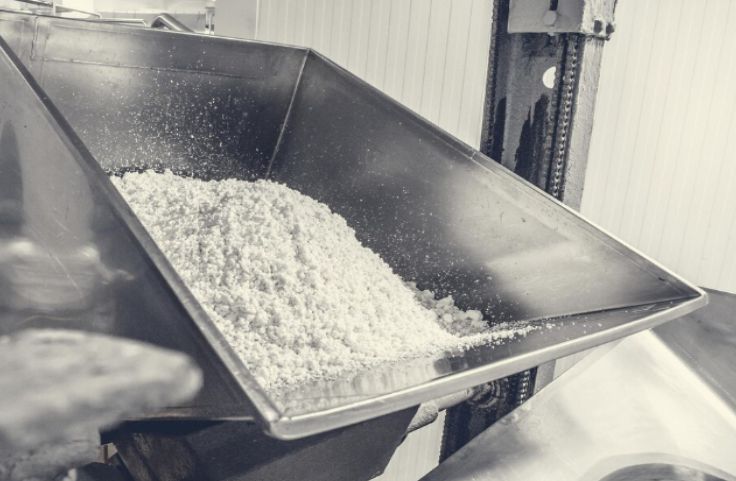
Once the cassava pieces are completely dry, they need to be milled into flour.
At this stage, the dried chips or flakes are passed through a milling machine like a hammer mill, burr mill, or stone mill.
Choose equipment that produces consistent flour texture and doesn’t overheat the product, which can affect color and quality.
The particle size can be adjusted depending on the desired fineness.
Fine flour is best for baking, while coarser flour may be used in snacks or industrial applications.
Make sure all equipment is clean before milling to prevent contamination.
Also, avoid mixing wet or under-dried pieces with dry ones.
Milling is a critical point where bad drying or poor prep will show, so make sure each earlier step was done right.
Sieve and Pack the Flour: Get a Smooth Finish and Keep It Fresh
After milling, the flour needs to be sieved to remove lumps and larger particles.
Use a fine mesh sieve to produce a smooth, uniform flour that buyers will expect.
The sieving step also helps you spot any contaminants or clumped pieces that need to be discarded.
Once sieved, pack the flour in airtight, food-grade bags or containers to protect it from moisture, air, and pests.
Use heat sealing if available, and always label your products with production and expiry dates.
Store the packed flour in a cool, dry place on wooden pallets, not directly on the floor.
Good packaging and storage prevent reabsorption of moisture and help you maintain product quality until it reaches your buyers.
Cost Breakdown and Profit Margins
Before you step into cassava flour production, take time to understand your numbers.
Knowing what it will cost to run your business and how much you can earn makes planning much easier.
Equipment and Setup Costs: What You Need to Get Started
You’ll need to invest in equipment like peelers, graters, dryers, and mills.
If you’re starting small, you can work with basic tools and upgrade as you grow.
A full setup can range from a few thousand to tens of thousands of dollars, depending on your scale and the machines you choose.
Don’t forget to factor in installation, a workspace, and safety materials to keep operations smooth and efficient.
Land and Facility Costs: Choose Space That Works for You
If you plan to build your own facility or lease space, location affects cost.
Being close to cassava farms helps reduce transport expenses and gives you faster access to raw materials.
You’ll need enough room for sorting, peeling, drying, milling, and storage.
Rent or purchase costs will depend on your area, so compare different options and pick what fits your production size and budget.
Labor and Raw Materials: Keep Your Daily Operations Running
Your business will rely on a steady cassava supply and skilled labor.
You’ll need workers for sorting, processing, packaging, and loading. Partner with local farmers or cooperatives to secure cassava tubers at fair prices.
These raw materials usually make up the bulk of daily expenses, so tracking market prices helps you plan.
Make sure labor and cassava costs are built into your monthly budget.
Utility and Maintenance Costs: Keep Equipment Working Efficiently
Electricity, water, and routine maintenance will affect your monthly expenses.
Machines like dryers and mills use a lot of power, especially if you’re running all day.
Clean water is needed for washing roots and cleaning tools.
Regular checks and repairs help prevent breakdowns that can stop production.
If you manage these costs well, you reduce waste and avoid unnecessary downtime.
Production Output and Revenue: What You Can Expect to Make
A small cassava flour facility can produce around 500 kilograms per day, while larger setups can process several tons.
If you sell flour at $1 to $2 per kilogram, your income depends on your daily output and how well you manage expenses.
Many producers earn between 20 to 50 percent profit, especially when they control waste, buy cassava in bulk, and sell to regular buyers.
Marketing and Distribution Strategies
Once your cassava flour is ready, you need to move it. How you brand and distribute your product will shape your success.
Good flour means nothing if people don’t know about it.
Build a Brand: Tell a Story Buyers Can Relate To
Your brand is more than a name or logo. It’s how people remember you.
Share why you started the business and what makes your cassava flour different.
Highlight facts buyers care about, like gluten-free, locally grown, or naturally processed.
Choose a clear name, clean logo, and packaging that speaks to your audience.
Keep your labels honest and easy to read.
Let your branding show you care about quality and your customers.
Choose Smart Packaging: Protect Your Product and Stand Out
Packaging isn’t just for looks; it keeps your flour fresh and market-ready.
Use strong, food-safe bags that block out air and moisture.
Make sure each pack includes clear labeling with your business name, weight, expiry date, and storage tips.
Pick designs that look clean and professional.
In stores, good packaging can help your flour stand out among the competition.
If it looks good and stays fresh, buyers are more likely to come back.
Sell Locally: Build Trust Through Small Retailers and Bakeries
Start in your local area where buyers know cassava flour. Reach out to neighborhood bakeries, food stores, and restaurants.
Let them try your product with free samples. Many of these businesses prefer working with local suppliers who can deliver fresh stock on time.
Keep your word and stay consistent. Once you build trust, they’ll keep ordering and may even recommend you to others in the food business.
Partner with Distributors: Reach New Buyers Through Wholesale Deals
If you want to expand, work with distributors who know how to move food products.
These middlemen already have links to grocery chains, bulk buyers, and export markets.
Partnering with them gives you access to bigger networks without handling everything yourself.
Be ready with your pricing, packaging, and delivery terms.
The more reliable you are, the easier it is for distributors to sell your flour alongside their other goods.
Go Online: Use Digital Platforms to Build Visibility
Your website is your storefront online. Keep it simple, share your story, your product details, and where to buy.
Add high-quality photos and make contact easy.
Use social media like Instagram or Facebook to show how your flour is used in real meals.
You can also join B2B marketplaces that link suppliers with big buyers.
Online platforms help you stay visible and give you ways to sell beyond your physical area.
Common Challenges and How to Overcome Them
Every cassava flour business runs into problems. What matters is how you handle them.
Knowing what to expect helps you prepare better and keep your production steady.
Deal with Spoilage: Process Cassava Quickly After Harvest
Cassava spoils fast once harvested, and that can ruin your raw material supply.
To avoid this, process the roots as soon as they arrive.
Keep your setup close to the farm or use fast transport. If you need to wait, store the roots in a cool, shaded place.
When possible, use temperature-controlled storage to slow down spoilage.
Acting fast saves your raw material and protects flour quality.
Manage Seasonal Scarcity: Build Strong Farmer Relationships
Cassava isn’t always available year-round, especially in areas with defined planting seasons.
Build relationships with multiple farmers so you’re not depending on just one source.
You can also look into contract farming. This lets you plan harvests and spread your supply across different times of the year.
When your supply chain is reliable, your business can keep running through dry periods.
Handle Power Supply Problems: Get Backup Systems in Place
Cassava flour production depends on machines that need steady power.
If you’re in an area with frequent outages, this can slow down or ruin your production.
Solve this by investing in a backup generator or a solar power system.
Even a basic setup can keep your key machines running when the main grid fails.
It’s an upfront cost that protects your long-term output and keeps you on schedule.
Follow Food Safety Rules: Keep Production Clean and Compliant
Meeting food safety standards helps protect your buyers and your brand.
Understand the local food laws and follow them in your production.
Clean workspaces, proper storage, and accurate labels are all part of it.
If you’re not sure where to begin, bring in a food safety consultant to help set up your system.
Clean processing protects your product and builds trust with your buyers.
Stay Competitive: Focus on Quality and Clear Messaging
You’re not the only one selling cassava flour, so you need to stand out.
Focus on consistent product quality and strong branding. Tell your story clearly, what makes your flour better or different?
Use clean packaging and highlight benefits like gluten-free or locally sourced.
Keep researching your market so you know what buyers want. Good branding backed by real quality helps you build repeat customers.
Frequently Asked Questions
How much does it cost to start a cassava flour business?
Startup costs vary, but small-scale production typically needs $3,000 to $10,000, depending on equipment, workspace, and your local cassava supply chain.
Is cassava flour profitable?
Yes. With proper processing, strong supply chains, and consistent buyers, producers can earn between 20 to 50 percent profit margins on cassava flour.
What equipment is needed for cassava flour production?
You need peelers, graters, dewatering presses, dryers, and milling machines. Equipment size and cost depend on your production scale and target output.
Can cassava flour be exported?
Yes. Many producers export cassava flour, especially if it meets international food safety standards like NAFDAC, FDA, or ISO requirements for packaging and hygiene.
Conclusion
Starting a cassava flour production business gives you more than a product; it gives you access to a growing market with real income potential.
With raw materials close by, low entry costs, and a clear step-by-step process, you can turn cassava into a steady revenue stream. It’s not just for big players.
You can begin small, build strong farmer relationships, meet food safety standards, and grow as demand increases.
From local shops to global buyers, the market for clean, gluten-free flour keeps expanding.
If you’re ready to commit to quality, planning, and smart marketing, cassava flour production can become a reliable and rewarding business for the long haul.
References
